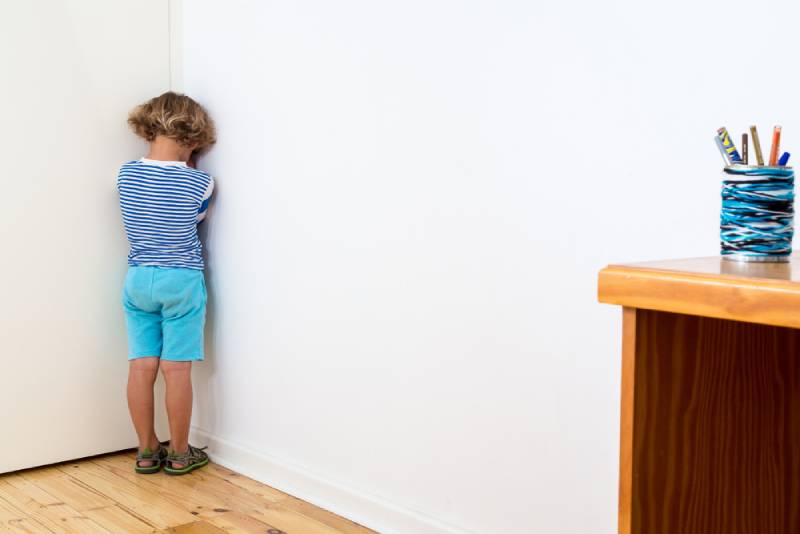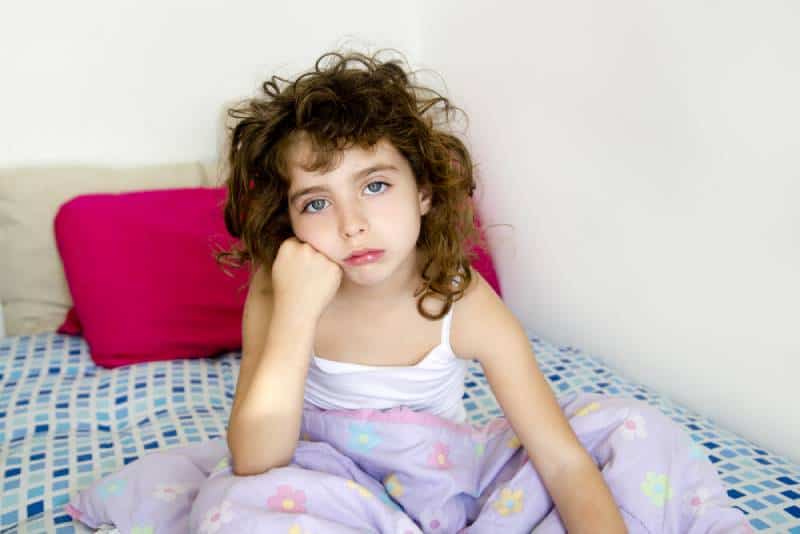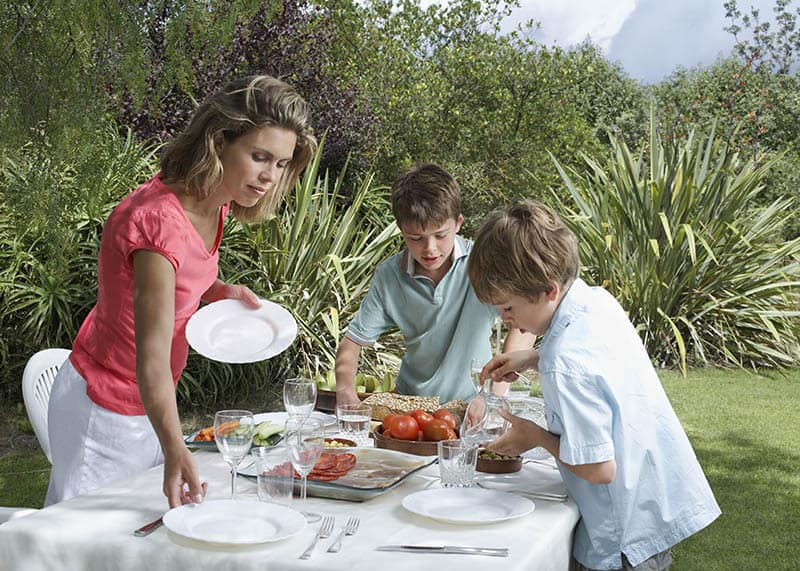Parenting, as a concept, has existed for eons and so too have punishments for kids, with both evolving and adapting with the times to fit the current societal norms. As a result, parents have had to adopt newly developed discipline strategies.
Nowadays, punishments for kids don’t involve physical punishment, or rather yet, they shouldn’t. That is deemed to be a barbaric and inappropriate approach these days and I couldn’t agree more.
Should a parent resort to physical violence to try setting their kids straight and deter them from bad behavior, all they’ll really end up doing is creating a bully who’ll practice the same method of conflict resolution as his parent did on him.
No, spanking is not the answer. Instead, we turn to modern methods of punishment through consequence, adapting it actively through our child’s development cycle all the way up to adulthood where they become independent.
You heard right, the most ideal form of discipline nowadays is one that keeps adapting and evolving actively alongside your child.
Parents have to utilize more creative punishments for child discipline rather than threatening physical harm as a means of getting their children to fall in line.
This is because, apart from the obvious harm to physical health, your kid’s mental health starts to suffer and deteriorate as well, turning them into an outright mess depending on the amount of stress they end up being put through while under your roof.
The worst part? Some of you may be doing this unconsciously because you believe it’s the right thing to do, and I don’t blame you. Parenting is extremely difficult, especially good parenting!
Nobody is perfect and never will be. There’ll always be times where you’ll mess up with regard to dishing out punishment by either being too harsh or too soft.
One of those leads to a spoiled child while the other leads to a child that’ll either end up having a toxic personality, become as timid as a mouse, or just end up having a number of mental issues that could have been avoided.
Punishing is a ‘skill’ that takes practice. For that very reason, it’s more important than ever to start learning the punishment balancing act now, so let’s see how a modern parent goes about handing out punishment throughout a child’s life.
Examples Of Modern Punishments For Kids
1. Time-outs

Giving a kid a time-out is a classic staple of parenting and a punishment that works on so many levels. It’s not too harsh, but staring at the corner of a wall is enough to make your kids think about what they’ve done to deserve this boring turn of events!
2. Early bedtimes

Kids love staying up for as long as they can, so it’s only natural that moving their bedtime to earlier than usual as a punishment is effective without the need to get physical.
3. Chores

Keeping your kids busy with doing work around the house can sometimes be seen as a normal, everyday thing, but it is more common as a form of punishment. Doing these little chores will help teach them responsibility and the value of hard work.
4. Grounding

Grounding has always been an efficient form of punishment as well because many kids enjoy having the ability to socialize and go out. Taking away that freedom will help your child learn to value it more and they’ll hopefully be less likely to repeat the same mistakes.
5. Revoking privileges

Cell phone time, video games and TV are but some of the extra things your child values. Taking some of these privileges away makes them appreciate the value of what they have and will teach them to respect it and not take it for granted.
While all of these forms of punishment have existed for a long time, the true key to modern parenting is about explaining the reasons behind the punishment when you put it into effect.
If the child doesn’t know what he did wrong, he’s no more likely to learn from his mistakes than if he wasn’t punished in the first place so take the time to sit down with him and explain things as best as you can.
Punishments Through Different Phases Of The Child’s Growth Cycle
Infants

When it comes to infants, a lot of parents are faced with the act of parenting for the first time in their lives and they don’t know how to go about it properly.
The key is to enforce as little discipline as possible during this period and allow your child to explore.
This is by no means letting them do anything and everything they want. Give them the freedom to discover the world around them, but within reason.
What this means is that you ought to ensure there is nothing nearby that might influence your child’s behavior poorly. In other words, you should move anything that may risk your child’s safety or anything you don’t want them to touch out of sight and out of reach.
Essentially you need to childproof your rooms to minimize the risk of any sort of misbehavior.
During this age period, you and your partner are your kid’s biggest role models and he’ll emulate everything you do to the best of his ability so don’t do anything you wouldn’t want him to.
Watch your language around your child as well because for your baby’s first word to be a swear word is not ideal.
The same goes for denying your child. Try not to use “no” as a default response the moment they go for something bad, instead redirect their attention toward something more positive, an alternative to what your child was intending to do.
And do not even think about trying to spank them. The only spank your little one should have felt so far is the one the doctor gave when your baby was delivered, none other.
And finally, a good practice of positive discipline is to lay down a set of house rules that both you and your partner (and anyone who walks into the house for that matter) should ideally follow.
Rules that help keep your baby’s environment one that allows him to explore his capabilities with minimal chances of harm to his physical and mental health.
Toddlers

It is at this point that your approach to punishments for kids will first evolve as your child becomes more aware of his surroundings and can somewhat communicate his feelings and intentions in ways other than tantrums and crying.
Mind you, there will still be a lot of that as well, but you’ll start getting more coherent answers as your toddler gradually masters the art of speech.
In this vein, he’s finally starting to grasp the concept of right and wrong and the thin line that separates them.
Of course, there will still be times where he’ll be confused about what to do in a certain situation and it’s up to you to guide him down the right path by continuing to teach him right from wrong.
Should your child do something right, praise proper behavior through some positive reinforcement while continuing to redirect your child away from negative behavior patterns.
Some parents say it’s best to downright ignore it, but that can sometimes make matters worse, so take that bit of advice with a pinch of salt.
Now, you may have taught them that violence isn’t the answer, but if everything magically stuck just because we said so, that would be great.
Sadly, that’s not the case so it’s likely that you’ll still have to intervene if something bad happens like a sibling fight or a similar display of violence occurs.
If only one of your kids was involved in a bad situation where he tried to use violence to get what he wants (this typically happens in daycare against other kids) then it’s up to you to teach him that problem-solving doesn’t boil down to who can bite or scratch the hardest.
Teach them that it’s about self control because if things get out of control, the only thing that comes out of it is a whole load of negative consequences.
Tantrums are also still a common thing to deal with when it comes to younger kids, and now you get to show them the natural consequences of acting badly which is to establish a clear punitive measure that will always be tied to it.
For example, if you’ve set up a curfew for bedtime then make it clear to them that the punishment is going to be a time out or being sent to bed early for a certain length of time (a few days, a week).
And, if your child throws a fit, extend the punishment. In time, he’ll understand the concept.
Set limits and teach them about the natural consequences that come when a rule is broken, ones that are easy enough to remember – especially if they stay constant. That way it won’t be so much a punishment as it will be a learning experience for the child in question.
Preschoolers

Disciplining preschool kids mostly comes down to the same points as toddlers except they’re a little bit more mature when the two are compared.
That being said, he’ll now be interacting with more of his peers and you’ll need to reaffirm with him what’s appropriate and what isn’t.
Go over what you’ve already established when your child was younger, but also teach him to treat others the way he’d like to be treated. This should become his creed because if he won’t feel good about something he said being said back to him, then he shouldn’t say it in the first place.
This is also the age where you should slowly start giving your kids simple chores to lay down the foundation for some basic discipline. Nothing too complicated, of course.
The best thing you can do is assign them to be a mother’s helper, to run around the house handing you the right utensil for cooking or moving a toy or something similar out of the way to help clean up.
Not only is it a form of very effective discipline and a great way to help foster good behavior, but it also helps make your kids feel accomplished, as though they’re contributing to a task and helping you out in the process, a trait many older children cherish more and more.
Doing these little things around the house will also help in building your child’s self-esteem and make him feel more confident when talking to his friends, making it easier for him to socialize in the long run.
Elementary school age

Here we see punishments for kids evolve significantly for a second time as your child has developed a far greater understanding of what’s right and what’s wrong, at least for the simpler things that you’ve been teaching him up until now.
That said, he’ll now be faced with many difficult scenarios that he himself most likely will not have the answer to.
There are logical consequences to bad decisions. To avoid him making any choices that will lead there, talk to him. Let him know that you’re his friend and that you’re still there to help navigate through complex situations.
This also means that you should pay attention to what they say.
These are never meant to be preaching sessions, but rather conversations to guide your child on how to best avoid punishment becoming a factor in his life, but also, making it clear that it’s always present if a rule is broken.
The rest of the processes from the Preschool and Toddler stage end up carrying over as you continue to teach your young children about the need to prioritize peaceful resolutions to any problems that they might have and that not breaking rules is more rewarding than breaking them.
Do make sure to keep them away from any sources of violence, especially those often shown on TV or in video games not intended for their age group.
Your kids are still rather impressionable and they’ll absorb that stuff like a sponge, risking the potential development of behavioral problems.
Teenage years

The final stretch in your child’s developmental journey and a final major evolution for the way your punishments for kids should ideally function.
As puberty hits and hormones spark, teens will usually have a hard time listening to authority, especially if the punishments for their behavior have been harsh in the past.
But you needn’t worry, this is only natural as the body tries to adapt to all of the changes it’s going through and process what exactly is happening to it.
Not only that, but this is also the period where your teenager is going to start seeking his own independence.
He’ll try defining himself multiple times until he’s finally satisfied with the path he wants to take and all of this is bound to include some forms of insubordination.
Do know that he still loves you no matter what – this is just how it is during this tumultuous period.
That said, you aren’t going to take all of it lying down either. There’s no need for it to be a power struggle for who gets to wear the pants in the house.
React accordingly to what they do and know what to punish and what not to.
Your teen is bound to make some mistakes during this period. Your job is to be there for him as a friend still, one who carries a dose of unconditional love for her child no matter what he does, but also as a parent who establishes clear rules and boundaries.
During this stage, these boundaries should be more than obvious and enforced with the option for leniency only if the child shows a proper level of responsibility.
But, as I’ve said, you don’t need to punish them for everything. If they hang out with the wrong crowd by accident and regret it later, they didn’t do anything wrong. They made an honest mistake and you should be there for them when they realize that.
You should be there to help them realize why what they did was bad in the first place and to ensure it doesn’t happen again.
Now, as far as the actual punishments for kids in this age group go, the most obvious ones are enforcing a strict curfew or outright grounding your teenage child.
Taking away cell phone privileges or banning video games for a time is also a good way of going about it. Just make sure to make it clear to them what their behavior is going to earn them, good and bad.
In Conclusion
Punishments for kids should never be any form of physical punishment as that’s likely to inflict harm on multiple levels. Instead, learn to resort to time-outs, curfews, the removal of certain privileges and the like.
Do make sure to make it apparent how their behavior is going to affect their level of comfort because if they know about the consequences, they’re less likely to be the cause of it.
Sure, it’s tough always having to think about the harshness of the punishments that you’ll potentially have to dole out and it takes away from other parenting duties, but it has to be done.
Remember that you aren’t the only parent in this scenario and that you can always ask your partner for help in making decisions, a second set of thinking gears to see if an idea is good or not.
Always take the time to think the problem through and try finding a neutral solution to it yourself as your kids still look up to you. There is absolutely no rush where this is concerned.
The principles that you’re teaching him are ones that you yourself should reflect upon and adopt, such as patience and peace.
If you still have any questions or you’re confused, the American Academy of Pediatrics has a small quick-reference guide on how to treat kids properly as they grow up.
Like this post? Please share or pin it for later. You can also stay in the loop and follow us on Facebook, Instagram or Pinterest.

This post contains affiliate links. Please see our full disclosure for more info.

